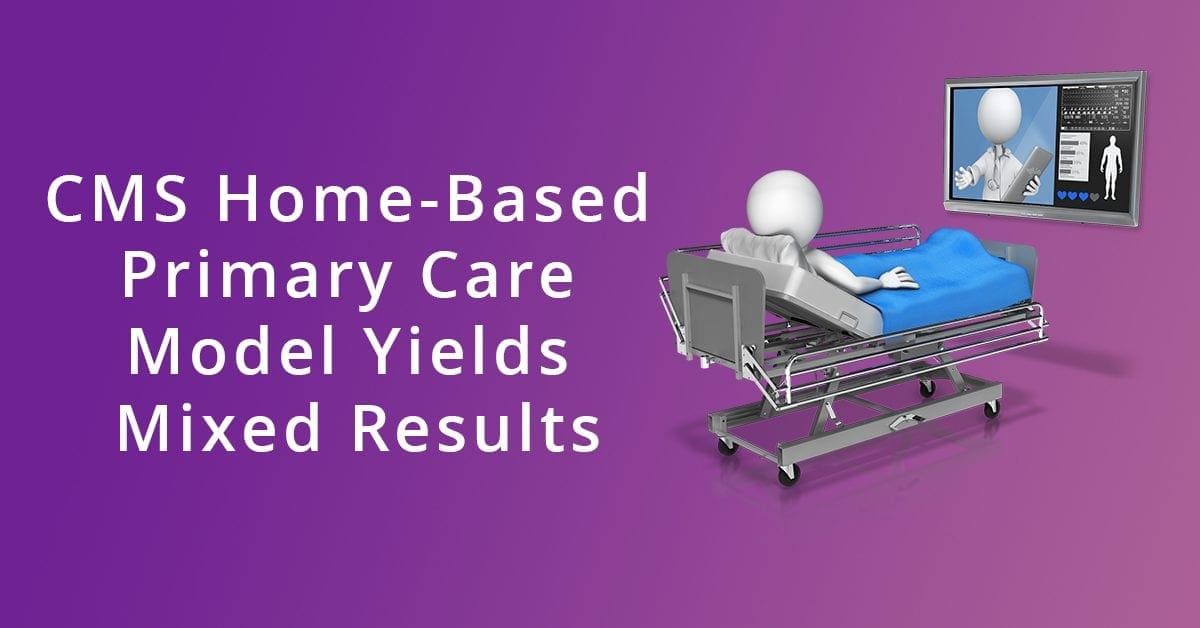Call us toll-free: 800-878-7828 — Monday - Friday — 8AM - 5PM EST

By Rebecca Pifer for Healthcare Dive
Dive Brief:
- A CMS innovation center demonstration that pairs payment incentives with a home-based primary care delivery model showed mixed results in terms of Medicare cost savings for chronically ill beneficiaries, according to data from the first four years of the test.
- The reward payment structure had some success in lowering Medicare expenditures over the four-year term, although the results were not statistically significant, according to an outside report analyzing the demonstration. The fourth year had the strongest results, reducing spend by $282 per beneficiary, per month (about a 6.5% monthly decline), driven by lower acute care utilization such as fewer readmissions and emergency department use.
- However, the home-based primary care model resulted in significantly higher spending. In the first year after starting home-based primary care, Medicare spent $256 more per beneficiary per month compared to traditional office-based care. In the second year, that figure spiked to $367 more per beneficiary per month, although it’s important to note the analysis included results from home-based primary care practices that were not participating in the demonstration and therefore weren’t held to fee and quality standards.
Dive Insight:
As the healthcare industry increasingly pivots site of care to the community level, new companies and care models are cropping up to meet the demand for home health caregivers and technologies.
ResearchAndMarkets estimates the global smart home healthcare market will hit $30 billion by 2023, up from $4.5 billion in 2017, driven by this demographic shift along with the growing demand for personalized, tech-enabled healthcare solutions.
The population continues to age into Medicare, according to the U.S. Census Bureau, the percentage of Americans 65 years and older will outweigh those under the age of 18 by 2030 — bringing with them a disproportionate host of high-cost, high-need chronic conditions.
As more seniors age into Medicare, stress on the public payer is rising to unsustainable levels, experts say. A Medicare board of trustees report from last month notes total Medicare spend is likely to snowball to almost 6% of GDP by 2038, and Part A financial reserves will be drained by 2026.
The Center for Medicare and Medicaid Innovation (CMMI) tests new models intended to help ease the burden on the federal program while bolstering care quality for the nation’s most vulnerable. Currently, the agency is piloting 44 ongoing models, according to its website.
The voluntary demonstration studied in the new analysis, called Independence at Home, was meant to reduce Medicare expenditures while improving care quality for chronically ill patients. To be eligible for the demonstration, beneficiaries had to have at least two high-cost chronic conditions, two limitations with daily living activities and at least one hospital and rehab admission within the past year.
Under the model, home-based primary care practices earned financial rewards if their Medicare expenditures stayed below a target level and if they met a set of quality standards. According to a previous report, Independence at Home saved Medicare over $49 million in its first three years.
This new data shows mixed results that the payment structure and the care delivery model lowered costs through its four years, but CMMI director Adam Boehler called the demonstration’s initial effects “promising” Thursday on Twitter. The combined success of both the incentive structure and the care delivery model together couldn’t be measured, CMMI said, due to how the demonstration was designed.
Many participating practices reported changing their organization and delivery structures within Independence at Home, CMMI said. This included expanding the care coordination team by adding staff and fostering relationships with other providers, along with putting systems in place to track patient hospitalizations and discharges to help with follow-ups.
Home-based primary care practices had similar costs to office-based practices over the first six months, though they were higher overall for the remaining 18 months. This was due partly to higher spend on home health services, durable medical equipment and hospice, the report found.
Industry realizes the home health industry is a fertile market. At-home care tools for patients roped in the most funding of any function in 2018, according to a StartUp Health report, as investors pour money into technologies that enhance care within the home.
Nonprofit health system Intermountain, known for being a disruptor, announced a homecare program for complex and chronically ill patients, bringing offerings available traditionally only within the hospital to the home through remote support and monitoring services.
Outside players Best Buy and Target entered the at-home medical device market earlier this year. Best Buy announced in mid-April it would offer a new device, TytoHome, that measures body temperature, upper respiratory recordings and throat scans, among other physiological readings, and sends them to a clinician.
Also last month, Target began selling at-home test kits for diagnosing conditions like Lyme disease, certain sexually transmitted diseases, fertility and menopause.
Fourteen practices, including independent facilities, academic medical centers and members of the Visiting Physicians Association, participated in the demonstration’s first four years, from June 2012 to September 2016. They were each required to serve a minimum of 200 patients annually. The demonstration was capped at 10,000 patients nationwide per year.
“Definitive conclusions on the clinical or policy implications of these findings have not yet been made,” the report said. “We look forward to examining additional years of the payment incentive structure analysis to assess if observed reductions continue to grow.”
